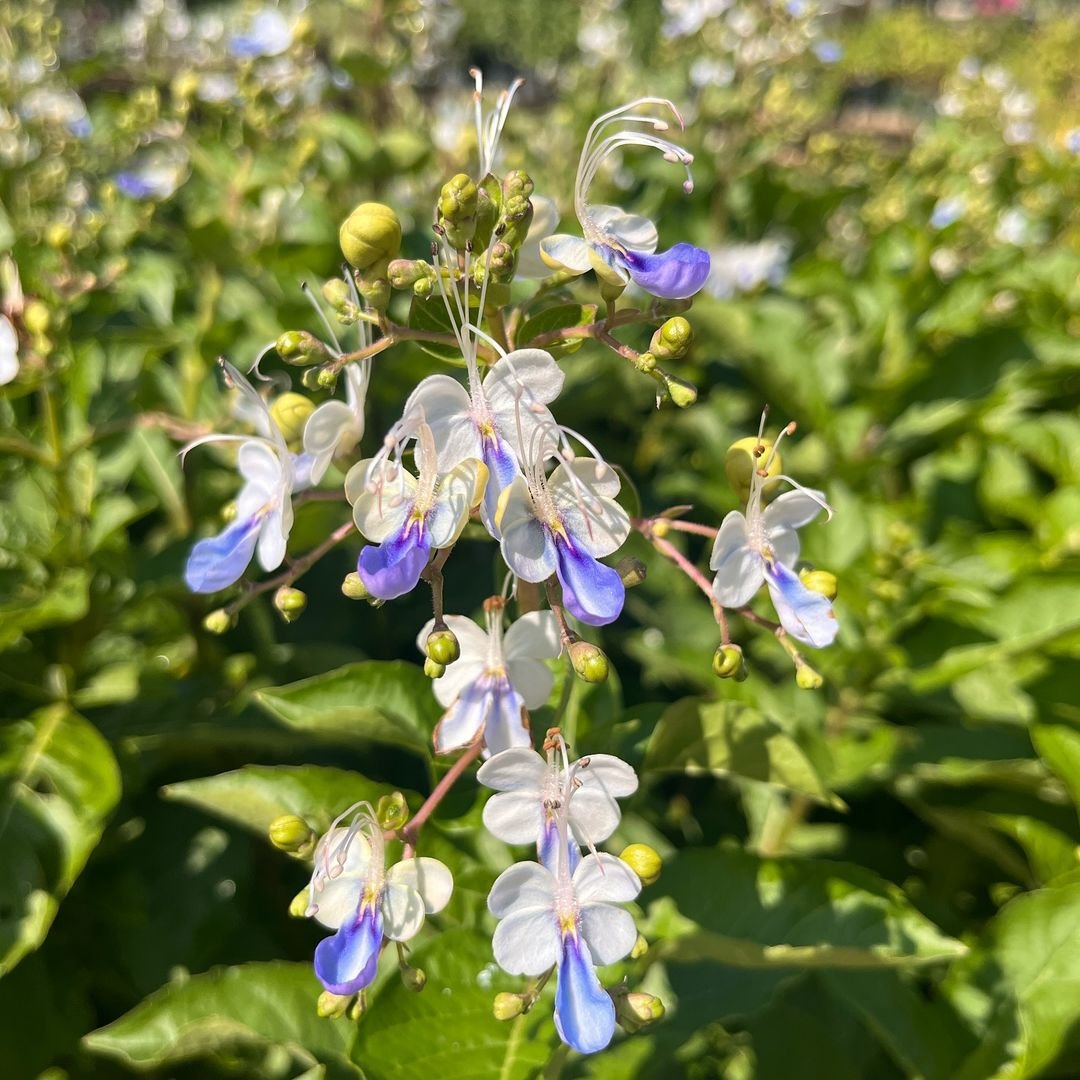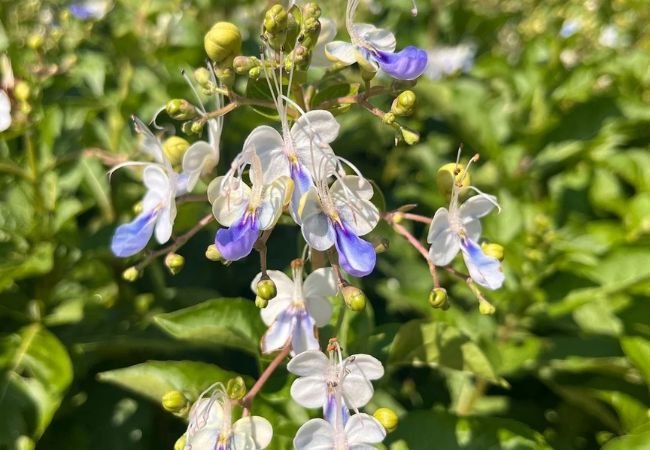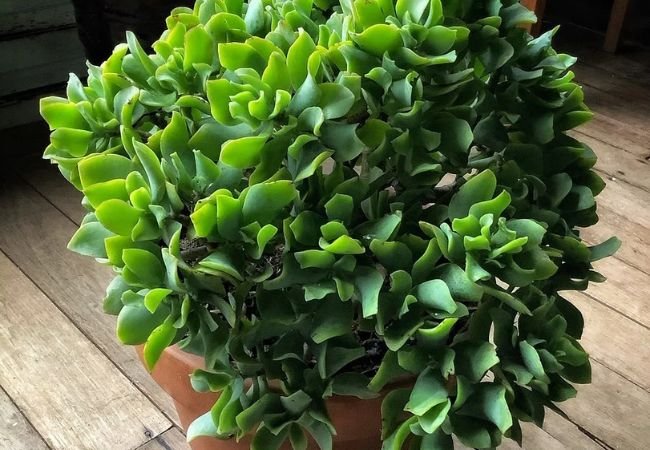Learn how to grow and care for the Blue Butterfly Bush, a vibrant shrub that attracts pollinators. Get tips on planting, maintenance and making the most of this garden favorite.
The Blue Butterfly Bush, scientifically known as Buddleja davidii, is a stunning addition to any garden. With its fragrant, colorful blooms that attract butterflies and other pollinators, this shrub is as beautiful as it is beneficial. In this guide, we’ll explore everything you need to know about growing and caring for the Blue Butterfly Bush.
Here is a chart with detailed information on the Blue Butterfly Bush:
| Category | Information |
|---|---|
| Botanical Name | Buddleja spp. (Typically Buddleja davidii) |
| Common Name | Blue Butterfly Bush |
| Plant Type | Deciduous Shrub |
| Hardiness Zone | 5-9 |
| Sun Exposure | Full Sun |
| Soil Type | Well-drained, Loamy or Sandy Soil |
| Watering | Moderate, Drought Tolerant Once Established |
| Growth Habit | Upright, Arching |
| Height/Spread | 3-12 feet tall / 3-8 feet wide (Varies by Cultivar) |
| Flowering Time | Summer to Fall |
| Flower Description | Spikes of Small, Fragrant Blue to Purple Flowers |
| Special Features | Attracts Butterflies and Bees, Fragrant Flowers, Long Blooming Period, Deer Resistant, Low Maintenance |
What is the Blue Butterfly Bush?

The Blue Butterfly Bush is a deciduous shrub known for its long, cone-shaped flower clusters. Despite its name,
the flowers can range from deep purple to lavender-blue. Key features include:
- Fast-growing, reaching 6-12 feet tall and 4-15 feet wide
- Blooms from mid-summer to early fall
- Attracts butterflies, bees, and hummingbirds
- Fragrant flowers
- Drought-tolerant once established
Research shows that butterfly bushes are excellent for attracting pollinators, making them a valuable addition to any pollinator-friendly garden.
Planting Your Blue Butterfly Bush
Follow these steps to give your Blue Butterfly Bush the best start:
1. Choose the Right Location
- Select a spot with full sun (6-8 hours of direct sunlight daily)
- Ensure well-draining soil
- Allow enough space for the mature size of the shrub
2. Prepare the Soil
- Test your soil pH; butterfly bushes prefer slightly acidic to neutral soil (pH 6.0-7.0)
- Amend the soil with compost if needed to improve drainage
3. Planting
- Dig a hole twice as wide as the root ball and just as deep
- Place the plant in the hole, ensuring it’s at the same depth as it was in its container
- Backfill with soil and water thoroughly
4. Spacing
- If planting multiple bushes, space them 5-10 feet apart, depending on the variety
Caring for Your Blue Butterfly Bush
Proper care will ensure your Blue Butterfly Bush thrives and produces abundant blooms.
Watering
- Water deeply and regularly during the first growing season to establish roots
- Once established, butterfly bushes are drought-tolerant
- Water during extended dry periods
Fertilizing
- Apply a balanced, slow-release fertilizer in spring
- Avoid over-fertilizing, which can lead to fewer blooms
Pruning
- Prune in late winter or early spring before new growth begins
- Cut back to about 12 inches from the ground to encourage bushy growth
- Remove dead or crossing branches
Deadheading
- Remove spent flower clusters to encourage continued blooming
- This also prevents self-seeding, which can be invasive in some areas
Winter Care
- In colder regions, add a layer of mulch around the base for winter protection
- In very cold areas, the shrub may die back to the ground but will regrow in spring
Common Problems and Solutions
While generally hardy, Blue Butterfly Bushes can face some issues:
1. Powdery Mildew
- Symptoms: White, powdery coating on leaves
- Solution: Improve air circulation and avoid overhead watering
2. Spider Mites
- Symptoms: Stippled or yellowing leaves
- Solution: Spray leaves with water or use insecticidal soap
3. Root Rot
- Symptoms: Wilting despite moist soil
- Solution: Improve drainage and avoid overwatering
4. Invasive Tendencies
- Problem: Can spread aggressively in some regions
- Solution: Choose sterile cultivars or remove seedlings promptly
Companion Plants for Blue Butterfly Bush
Enhance your garden’s beauty and biodiversity by pairing your Blue Butterfly Bush with these complementary plants:
- Coneflowers (Echinacea)
- Black-Eyed Susans (Rudbeckia)
- Lavender
- Salvia
- Yarrow
These plants share similar growing conditions and will create a pollinator-friendly garden oasis.
Attracting Butterflies and Other Pollinators
To maximize the butterfly-attracting potential of your Blue Butterfly Bush:
- Plant in groups to create larger nectar sources
- Provide a water source, like a shallow birdbath
- Avoid using pesticides
- Include plants that serve as butterfly host plants, like milkweed
Varieties of Blue Butterfly Bush
While the classic Blue Butterfly Bush is beautiful, there are several varieties to consider:
- ‘Black Knight’ – Deep purple flowers
- ‘Nanho Blue’ – Compact variety with lavender-blue flowers
- ‘White Profusion’ – White flowers
- ‘Pink Delight’ – Pink flowers
- ‘Adonis Blue’ – True blue flowers
Each variety offers unique characteristics, allowing you to choose the perfect fit for your garden.
Using Blue Butterfly Bush in Landscaping
The Blue Butterfly Bush is versatile in landscape design:
- As a focal point in mixed borders
- In butterfly gardens
- As an informal hedge
- In large containers on patios
- In cottage-style gardens
Its long blooming period and attractive foliage make it a valuable addition to various garden styles.
Environmental Considerations
While Blue Butterfly Bushes are beloved by gardeners, it’s important to be aware of their potential environmental impact:
- In some regions, they’re considered invasive due to their prolific self-seeding
- Check with your local extension office before planting
- Consider sterile cultivars if invasiveness is a concern in your area
Responsible gardening ensures we can enjoy beautiful plants like the Blue Butterfly Bush without harming local ecosystems.
The Blue Butterfly Bush is a stunning and rewarding shrub that can bring vibrant color and beneficial pollinators to your garden. With its long blooming period, drought tolerance, and relatively easy care, it’s an excellent choice for both novice and experienced gardeners.
Remember to choose the right location, provide proper care, and be mindful of its potential to spread in some areas. By following the tips in this guide, you’ll be well on your way to enjoying the beauty and benefits of the Blue Butterfly Bush in your garden.
Whether you’re looking to attract more butterflies, add a pop of color to your landscape, or simply enjoy the fragrant blooms, the Blue Butterfly Bush is a versatile and charming addition to any outdoor space. Happy gardening!








Leave a Reply